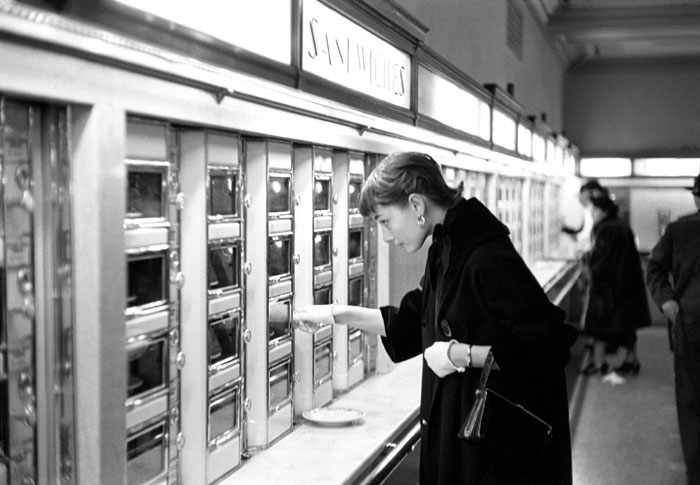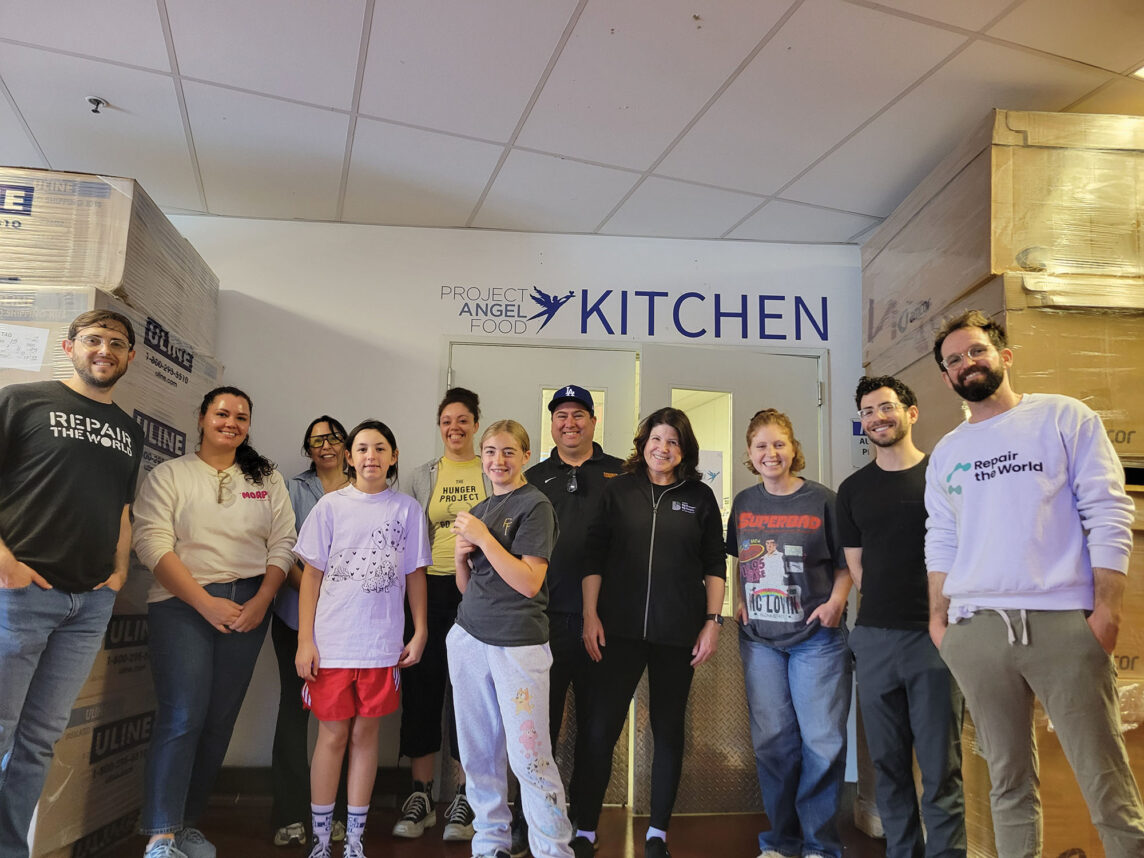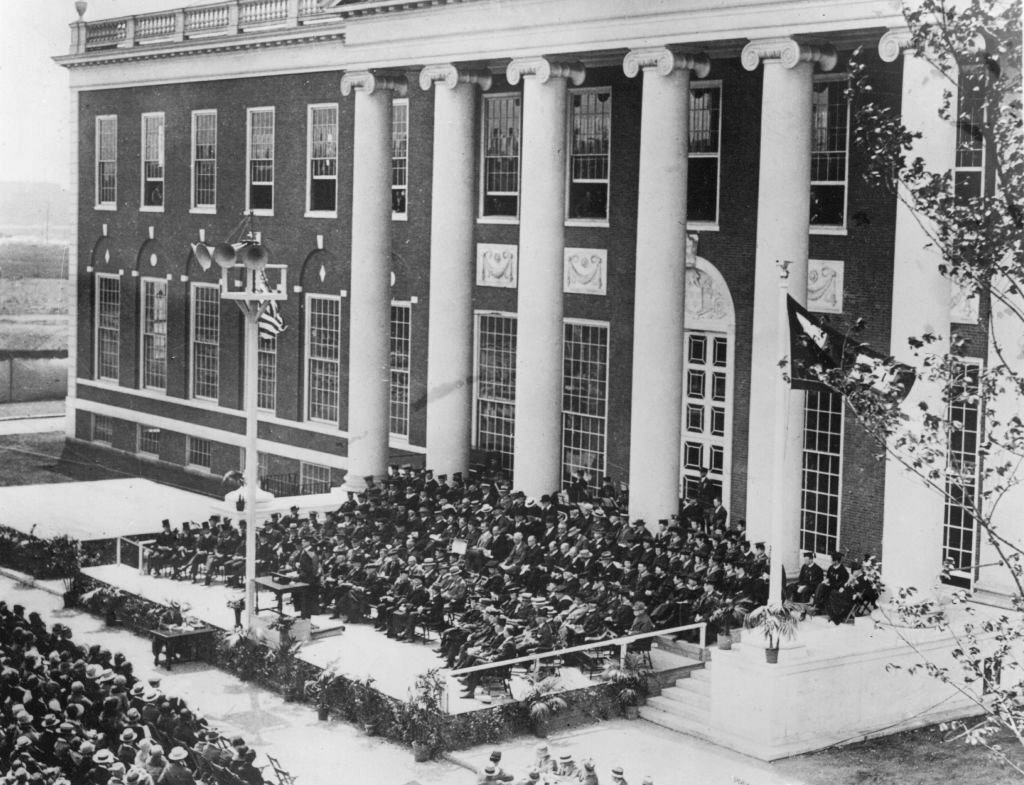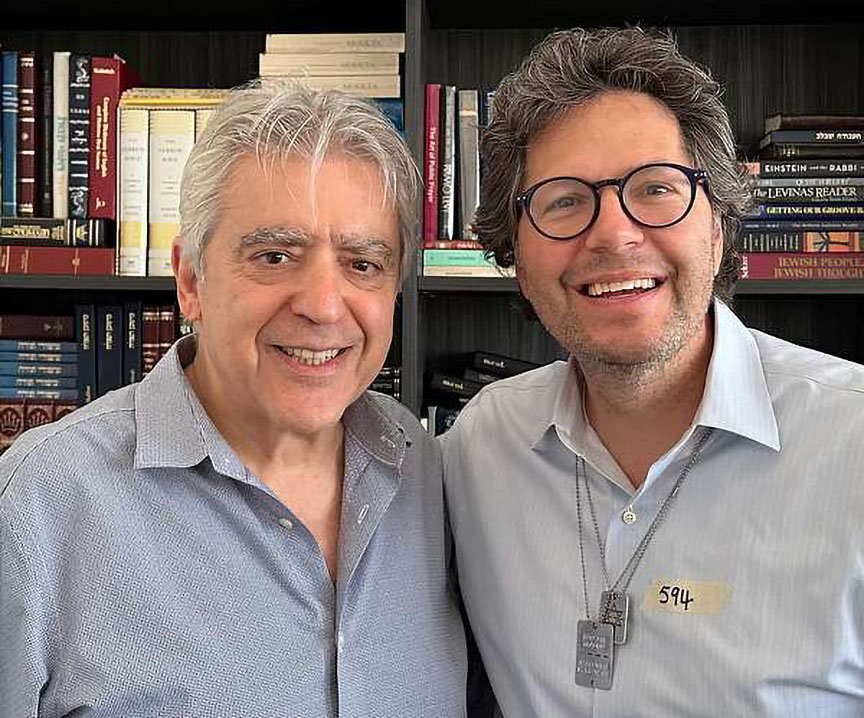

Is it possible to feel an emotional attachment to a restaurant you never went to? After watching “The Automat,” and hearing people like Ruth Bader Ginsburg, Mel Brooks, Howard Schultz and Colin Powell wax nostalgic about Horn & Hardart’s chain of Automat restaurants, I would say the answer is yes.
In her new documentary, first-time filmmaker and director Lisa Hurwitz explores the history of one of the more enchanting and unique dining experiences of the American immigrant story.
Located in Philadelphia and New York City, these eateries served food through innovatively engineered vending machines. The walls of an Automat contained rows of small windows; behind each window, a single portion of food. When you put your nickels in the slot, the window would pop open and you could take your sandwich, soup or pie to your table.
A wealthy businessperson may have enjoyed the chain’s beloved apple pie next to a poor immigrant who had just arrived in the States and was craving some coffee, which they could get for only five cents.
From 1902 until 1991, Automats captured the imaginations of the customers they brought together to eat at shared tables. A wealthy businessperson may have enjoyed the chain’s beloved apple pie next to a poor immigrant who had just arrived in the States and was craving some coffee, which, until 1950, they could get for only five cents. Essentially, it was the perfect symbol of America. A wealthy businessperson may have enjoyed the chain’s beloved apple pie next to a poor immigrant who had just arrived in the States and was craving some coffee, which they could get for only five cents.
Going into this film, I’d never heard of the Automat. But by the end of it, I was sad that it went under – even though I was only eight years old when it shuttered its doors for good. Hurwitz, a 2008 Milken grad, is even younger than me.
“Even though the Automat was a business, it was a very charitable place that really took care of its customers,” Hurwitz told the Journal. “The customers were compassionate towards one another. They shared tables. They were each other’s entertainment. The restaurant was a lifeline for people.”
At a recent screening and Q&A for “The Automat” at Laemmle Royal, Hurwitz discussed how she loved eating cafeteria-style while in school. When she learned about the Automat, where people from all walks of life sat side by side and ate very affordable food, she was compelled to make the film. She raised over $55,000 from 438 backers on Kickstarter. Now, it’s showing in select theaters around the country.
Through expert storytelling, first-person accounts from both famous and virtually unknown people and clever and funny edits by writer and editor Michael Levine, this film pulled at my heartstrings and made me wish I had experienced the Automat.
In the film, Schultz talked about how the Automat was a huge inspiration to him as a child, and led to him creating Starbucks. He showed a framed photo of the restaurant that he kept in his office to remind him of his roots. While Schultz may have been creatively inspired by the Automat, he certainly wasn’t inspired by their affordability, as you would be hard-pressed to find any reasonably priced coffee at any Starbucks, or, for that matter, at any trendy café.
Ginsburg waxed nostalgic about how she used to go to the restaurant to get a coffee and study. Brooks reflected on his good times there as a child who came from a poor home. He sang about the Automat at the film’s conclusion.
Unfortunately, by the time the Automat had lost its popularity, it became a place where transients would interfere with the customer experience. The film focuses mostly on the heyday, where it was a sweet and charming place to go because the owners put their hearts into what they were creating.
Though it wasn’t a kosher restaurant by any means, the Automat was a very Jewish place. “New York is such a Jewish city and therefore, the Automat was a place loved by Jews,” said Hurwitz. “It was a place where immigrants coming through New York claimed the space as theirs. As a result, it was passed down through generations of Jews in New York. You’d take your child there and they would take their child there. It became part of the New York Jewish experience.”
“The Automat” is a pleasurable film to watch. It’s filled with laughs and magical moments and will draw you in from beginning to end. And that, according to Hurwitz, was what she was attempting to accomplish.
“We tried to keep the film as engaging as possible for a historical documentary,” she said. “I gravitate towards films that are on the lighter side and that make me laugh and relieve my stress of the day. It was a priority for me to make this as easy to watch as possible.”
























 More news and opinions than at a Shabbat dinner, right in your inbox.
More news and opinions than at a Shabbat dinner, right in your inbox.